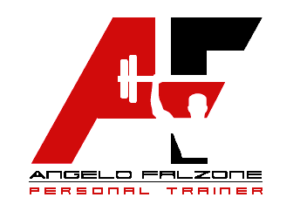How Do You Read and Understand Nonprofit Financial Statements?

As you implement these practices, remain open to new ideas and innovations that can enhance your organization’s financial stability and mission effectiveness. This not only builds trust with donors, volunteers, and stakeholders but also strengthens the overall governance and strategic direction of your organization. By fostering an environment where financial knowledge and data-driven decision-making are prioritized, nonprofits can better navigate the complexities of their work and make a lasting impact on the communities they serve. Understanding the ebbs and flows of your organization’s cash will help you make smart management decisions that protect your core programs and overall sustainability.

Step 1: Adjusting Net Income for Non-Cash Revenue and Expenses
If there was an increase in accounts payable, there is more cash that your organization owes, but the cash has not yet left. Investing activities include buying or selling long-term assets, such as purchasing new equipment or selling property. Kristine Nonprofit Cash Flow Statement Ensor is a freelance writer with over a decade of experience working with local and international nonprofits. As a nonprofit professional she has specialized in fundraising, marketing, event planning, volunteer management, and board development.
How to Prepare an Indirect Method Statement of Cash Flows for a Nonprofit

Many nonprofits will also share these financial statements with their donors, and use them in their annual reports. Financial statements give donors a better understanding of how your organization is doing. Foundations also typically require https://www.bookstime.com/ nonprofits to provide financial statements when they apply for grants. Understanding these fundamentals of nonprofit accounting is crucial for anyone involved in the financial management or oversight of a nonprofit organization.
- Below, you’ll find guidance on how to report these transactions that are unique to not-for-profit entities.
- You can check with GAAP and IFRS practices to ensure you’re correctly categorizing net assets.
- The investing activities section of the SCF reports the amounts spent to purchase long-term assets such as equipment, vehicles and long-term investments.
- Preparing detailed financial statements can give you important insights into your organization.
- Financing activities for a nonprofit involve the flows of cash that affect the size and composition of the net assets or equity of the organization.
Three components to nonprofit cash flow statement
For nonprofit leaders, regular and thorough review of the Statement of Cash Flows is essential. It not only ensures a clear picture of financial health but also enhances strategic decision-making capabilities. Understanding where cash comes from and where it goes can help leaders make informed decisions that align with their mission and long-term goals. In this article, we’ll explain more about each financial statement, why and when nonprofits need financial statements, and share examples of how organizations have used them in their annual reports. While the statement of cash flows, or cash flow statement, may be a bit difficult to prepare, it is an important financial statement to be read. The operating activities section of the SCF reports the changes in cash other than those reported in the investing and financing sections.
The FASB requires every nonprofit to present expenses by function and nature in one place (statement or notes). Cash outflows might come from activities like salaries and wages, taxes, supplies, inventory and other activities. Return to the Internal Reports Introduction page for links to greater detail on how to read various reports as well as recommended formatting. Below, you’ll find guidance on how to report these transactions that are unique to not-for-profit entities.

- Activities listed here may include revenue from the purchase or sale of investments as well as interest and dividend income.
- On SoFi’s marketplace, you can shop top providers today to access the capital you need.
- Propel Nonprofits is an intermediary organization and federally certified community development financial institution (CDFI).
- By now, you understand the logic behind the additions and subtractions from net income.
- The FASB Accounting Standards Codification Topic 958 requires important additional disclosures regarding liquidity, restrictions, etc. for creditors, donors, and others.
- Encouraging continuous education and professional development in financial management can significantly benefit nonprofit leaders and staff.
To find out if The Charity CFO is right for your organization, request a free consultation today. By now, you understand the logic behind the additions and subtractions from net income. But by sharing so much information, they are exceptionally transparent and strengthen relationships with their supporter base. The inclusion of the text and photographs in Wellington Zoo’s annual report further encourages trust in the organization.
Join the fundraising movement!
- The Statement of Cash Flows report is a required component within an organization’s audit per GAAP (generally accepted accounting principles).
- For nonprofits, income statements are often referred to as statements of activities.
- A decrease in a current asset, such as accounts receivable, means that customers paid their bills to you, and you have earned cash.
- This model also shows the transfer of restricted funds from savings to checking as the funds were released from restriction, partly in March and fully by May.
